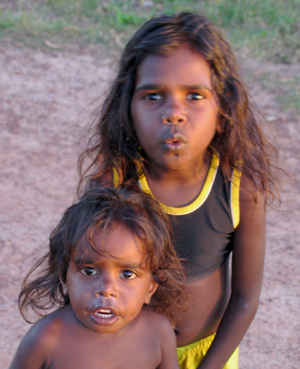Welcome
Garrathalala Secondary School Construction Project
 A project to assist in providing secondary school facilities for the communities of East Arnhem Land in the Northern Territory of Australia
A project to assist in providing secondary school facilities for the communities of East Arnhem Land in the Northern Territory of Australia
A combined project of;
The Rotary Club of Geelong Central
Rotary Club of Nhulunbuy
Yirrkala Home Lands Schools
 In the North eastern tip of Arnhem Land, in the Top End of Australia's Northern territory, lie the Yirrkala Homelands.
In the North eastern tip of Arnhem Land, in the Top End of Australia's Northern territory, lie the Yirrkala Homelands.This region is populated by small, outlying communities of indigenous people and is poorly serviced for educational opportunities due to its isolation and the distances involved. It is a region where the drift to major towns can bring problems such as homelessness, drug, alcohol and substance abuse.
THE Yirrkala Homelands School has been successfully operating a boarding program for secondary students at Garrthalala homeland since 2003, with 25 to 30 students attending the school each week and a further 30 to 40 students unable to access the program due to resource constraints.
In 2007, after four years of teachers and students eating and sleeping in classrooms and on school verandas, parents saved sufficient money from their Assistance to Isolated Children payments to fund construction of a simple dormitory by volunteers from the Geelong Central Rotary Club.
Garrthalala from Rotary Media District 9780 on Vimeo.
Project Co-ordinator Colin Peel from the Rotary Club of Geelong Central says that building in Arnhem Land was a huge challenge. "The combination of distance, and remoteness imposed many obstacles. When the first team arrived the two containers of building materials were sitting on the dock at a Nhulunbuy as unseasonal rains had left the road to Garrthalala virtually impassable. Through the support of Alcan, and Nhulunbuy Rotary Club and friends we were able to unload the containers and transport over 23 tonnes of materials via trailers, four wheel drives and heavy vehicles to Garrthalala."

Aside from the obvious practical advantages of the Club's project, Colin believes their work provided social benefits to both the community and project volunteers.
"It wasn't just building the building but being able to assimilate with the aboriginal communities themselves . By weeks three and four they would come over at night and dance for us or we would go over to their camp and have a meal with them. The fact that they were able to talk to us and we were able to talk to them, I think was a huge benefit to the project and thats what its all about"
The challenges of indigenous education are intricate and of long standing but the secondary homelands education programme certainly seems to be on the right track. Perhaps it will become a blueprint for homeland education across the country.
